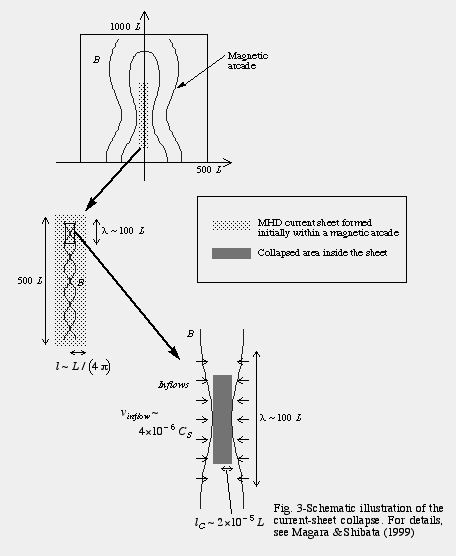
In our previous work ("Loop top source of solar flare" and "Plasmoid dynamics"), we investigated the main phase of a flare during which a huge amount of free magnetic energy is released quickly in various forms. It is suggested that this violent energy release is caused by fast magnetic reconnection, so how the fast reconnection is activated just before the main phase became an important issue when we studied the preflare phase (Magara & Shibata 1999). Since spatially localized resistivity is regarded as one of the origins of the fast reconnection, we performed MHD simulations for reproducing how initially uniform resistivity changes to localized one inside a current sheet during the preflare phase. We started with a force-free current sheet with uniform resistivity in it, which was subject to the tearing instability. The simulations showed that the current sheet was spontaneously compressed around several X-points formed via a tearing process, where magnetic field had a nearly antiparallel configuration that had been changed from the non-antiparallel, force-free configuration. By conducting a parametric analysis of the simulated data, we derived a scaling law regarding the thickness of a compressed portion of the current sheet to estimate how much the thickness could be reduced in the solar corona (Figure 3). Consequently, we found that the current sheet could be compressed enough around the X-points to cause anomalously intensified resistivity in the corona. This work demonstrated one of the physical properties of coronal current system responsible for producing solar flares.
Magara, T., & Shibata, K. 1999, ApJ, 514, 456
